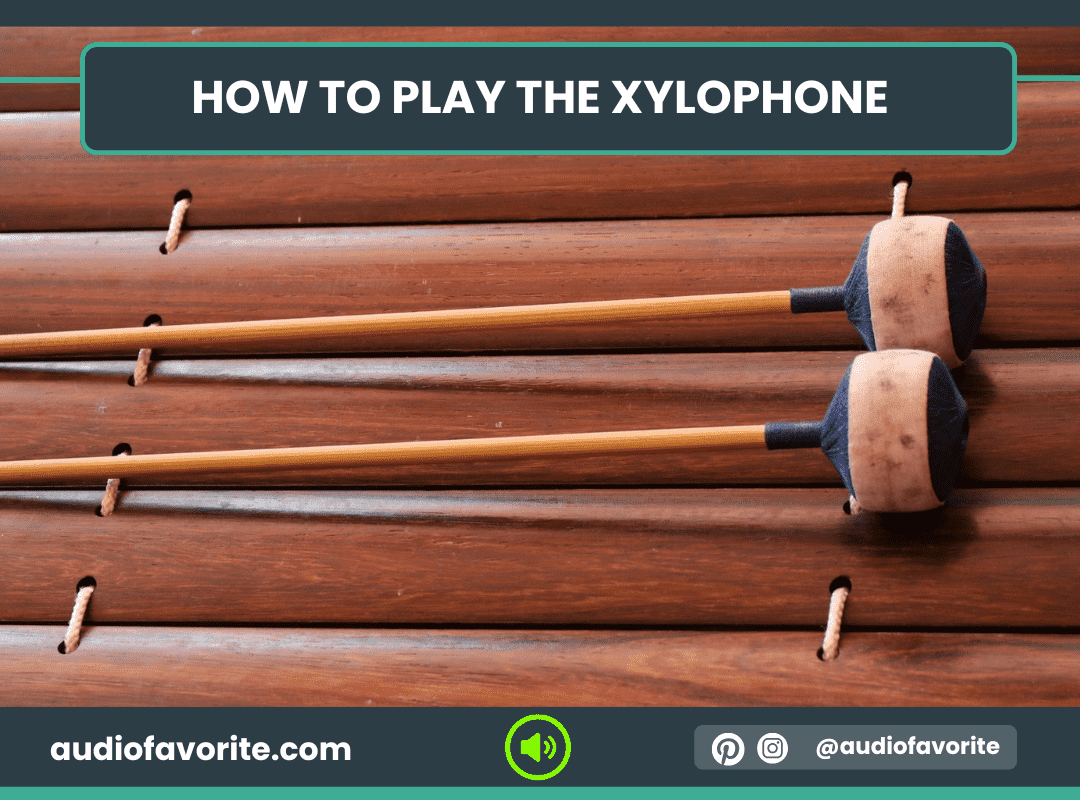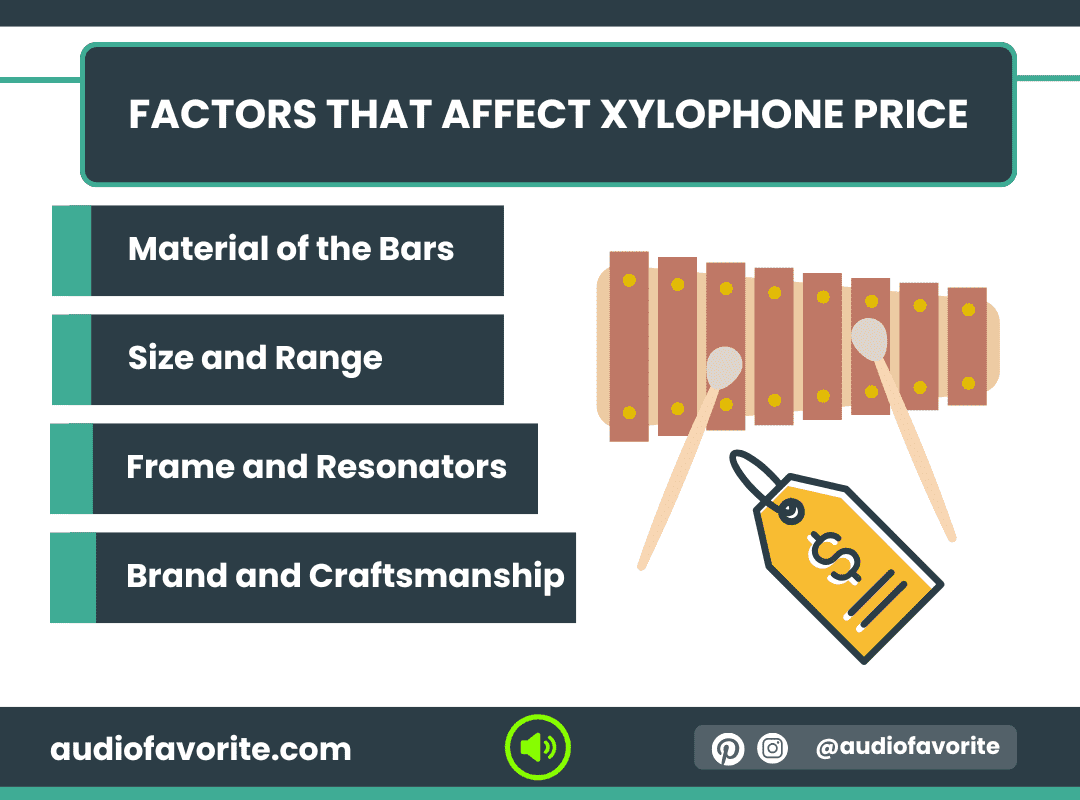Have you ever wondered what makes that bright, playful sound in orchestras, classrooms, and even pop songs? That’s the xylophone!
In this article, you’ll discover everything you need to know about this fascinating percussion instrument, including:

✅ What a xylophone is and how it works
✅ Its history and cultural significance
✅ Differences from marimba and glockenspiel
✅ How to play it properly with mallets
Ready to explore the xylophone from every angle and maybe even start playing one yourself?
Keep reading to become an xylophone expert and uncover tips that will make your music shine!
What Is a Xylophone?

A xylophone is a percussion instrument made of wooden bars of different lengths, arranged like a keyboard. When you strike the bars with mallets, each bar produces a distinct musical note. The word itself comes from the Greek roots xylon (wood) and phonē (sound), which literally means “wooden sound.”
What sets the xylophone apart is its bright, sharp, and resonant tone, making it one of the most recognizable instruments in the percussion family. Unlike drums, which rely on stretched membranes, the xylophone belongs to the idiophone category-instruments that create sound from the vibration of the material itself.
Why the Xylophone Is Popular in Music
The xylophone is widely used because it’s:
Versatile – It can be played solo, in orchestras, or in school music classes.
Educational – Many music teachers use beginner xylophones to teach rhythm and pitch recognition, especially for children.
Expressive – Professional-grade xylophones produce a clear, penetrating sound that cuts through large ensembles, which is why composers often use it for dramatic or playful effects.
History of the Xylophone

The xylophone’s history stretches back hundreds of years, with roots across several continents. Unlike instruments that have a single point of invention, the xylophone evolved in different cultures independently, which makes tracing its exact origin fascinating.
Origins in Africa and Southeast Asia
The earliest xylophones were found in Africa and Southeast Asia, where wooden bars were laid over pits, gourds, or banana stems to act as natural resonators. These instruments were often used in ceremonial and community music, serving both spiritual and social purposes. For example, African balafons—still played today—are considered close relatives of the modern xylophone.
When Was the Xylophone Invented?
While there’s no single invention date, the xylophone is believed to have existed in Africa as early as the 14th century, possibly earlier. In Southeast Asia, particularly in Indonesia, xylophone-like instruments such as the gambang were an integral part of gamelan ensembles. These parallel developments show that the idea of producing pitched tones from wooden bars emerged in multiple places around the same time.
Who Invented the Xylophone?
Unlike instruments tied to a single inventor, the xylophone has no individual creator. Instead, it is the result of cultural innovation across regions. African, Asian, and later European musicians each refined the design to suit their own traditions. This collaborative evolution is part of what makes the xylophone so unique: it carries the DNA of multiple musical cultures.
The Xylophone in Europe
The instrument entered Europe around the 14th century, where it was initially a folk instrument played in Central and Eastern Europe. Early references appear in musical treatises such as Arnolt Schlick’s Spiegel der Orgelmacher (1511). Over time, the xylophone moved from folk tradition to classical orchestras in the 19th century, thanks to composers like Camille Saint-Saëns, who used it in Danse Macabre (1874).
By the 20th century, the xylophone had become a standard orchestral percussion instrument, with modern improvements such as precisely tuned wooden bars, resonator tubes, and durable mallets that allow for louder, more consistent performances.
Xylophone Classification

What Family Is the Xylophone In?
The xylophone belongs to the percussion family, one of the largest families of instruments in music. More specifically, it is an idiophone, meaning that the sound comes directly from the vibration of the instrument’s material (in this case, wooden bars) rather than from strings, membranes, or air.
This classification is important because it explains the bright, percussive quality of the xylophone’s tone. While drums, for example, rely on skins stretched over a frame, the xylophone produces its sound entirely from solid wood bars, amplified by resonators beneath them.
Xylophone vs. Marimba
At first glance, the marimba and xylophone look very similar, but they have key differences:
Range & Size: Marimbas are larger, often spanning five octaves, compared to the xylophone’s two to four octaves.
Tone: The marimba has a warmer, deeper, and mellower sound, thanks to its longer wooden bars and larger resonators. The xylophone produces a sharper, brighter, more cutting tone, which is why it stands out in orchestras.
Usage: Marimbas are popular in solo performances, jazz, and contemporary compositions, while xylophones are used in orchestras, bands, and educational settings.
Xylophone vs. Glockenspiel
Another common comparison is xylophone vs. glockenspiel:
Material: The biggest difference is that the glockenspiel uses metal bars, while the xylophone uses wooden bars.
Pitch Range: The glockenspiel plays higher pitches with a bell-like tone, whereas the xylophone has a lower, woodier timbre.
Sound Character: The glockenspiel has a clear, sparkling tone often used for magical or delicate effects, while the xylophone’s sound is more earthy and percussive.
Anatomy: What a Xylophone Is Made Of

Understanding what a xylophone is made of helps explain its distinctive sound and why different models can vary so much in price and tone quality.
Bars: The Heart of the Xylophone
The bars are the most important part of a xylophone. Traditionally, they are made from hardwoods like rosewood, which produce a warm yet bright sound with excellent resonance. Professional-grade instruments almost always use rosewood for its durability and tonal richness.
However, many modern xylophones- especially those designed for schools or beginners- use synthetic materials such as fiberglass or synthetic composites. These are more affordable, lightweight, and durable, though some players feel they lack the “organic” warmth of natural wood.
👉 If you’re a beginner or buying for children, synthetic bars are practical. If you’re a performer seeking the best sound, rosewood is the gold standard.
Frame and Resonators
Beneath the bars lies the frame, which holds everything in place, and the resonators, which are hollow tubes (usually metal) placed under each bar. The resonators amplify and enrich the sound, making the xylophone’s tone project clearly even in large spaces.
High-quality instruments have carefully tuned resonators that match the pitch of each bar, while cheaper models may have little or no resonation, producing a thinner sound.
What Do You Hit a Xylophone With?
To play a xylophone, you use mallets. These are sticks with a round head, and the material of the head greatly affects the sound:
Rubber mallets: Balanced tone, great for general playing.
Wooden mallets: Produce a bright, sharp, and cutting sound, ideal for fast passages in orchestras.
Yarn-wrapped mallets: Softer attack, sometimes used when a gentler sound is needed.
Professional percussionists often carry several types of mallets to adjust the tone depending on the piece of music. Beginners typically start with medium-hard rubber mallets, which work well across a variety of styles.
How to Play the Xylophone

Learning how to play the xylophone is all about developing good posture, using the right grip on the mallets, and practicing simple note patterns until they feel natural. Here’s a clear, step-by-step guide to get you started the correct way.
Step 1: Position Yourself Correctly
Stand with balance: Keep your feet shoulder-width apart for stability.
Stay relaxed: Keep your shoulders down and arms loose to avoid tension.
Instrument placement: The xylophone should be close enough that you can comfortably reach all the bars without leaning.
Step 2: Hold the Mallets Properly
Grip: Pinch the mallet lightly between your thumb and index finger, then let the other fingers wrap gently around the stick.
Relaxation: Avoid holding too tightly; a relaxed grip allows the mallet to rebound naturally.
Angle: The mallets should be angled slightly, not held perfectly vertical, so your wrists move freely.
Step 3: Striking Technique
Aim for the center: Strike the bar near the middle for the clearest, fullest sound.
Let it bounce: Think of it like bouncing a ball-let the mallet rebound off the bar instead of pressing into it.
Tone quality: Hitting too close to the edge can make the note sound thin, while pressing down can kill the resonance.
Step 4: Start with Simple Exercises
Begin on middle C and play a five-note scale upward (C–D–E–F–G), then back down.
Use one hand at a time until you feel comfortable.
Once confident, practice with both mallets, alternating right and left hands evenly.
Keep a slow, steady rhythm before gradually speeding up.
Step 5: Choosing the Right Mallets
Rubber mallets: Best for beginners- balanced tone and easy to control.
Wooden mallets: Produce a brighter, sharper sound but require more precision.
Yarn-wrapped mallets: Softer, warmer tone, useful for gentler passages.
Most students begin with medium-hard rubber mallets, which provide a good balance of tone and control.
Tips for Beginners
Keep wrists loose: Movement should come from the wrist, not the arm or shoulder.
Use both hands equally: Practice simple patterns with both hands to build coordination.
Start slow, then build speed: Accuracy comes before speed.
Listen carefully: Pay attention to tone quality- your ears will tell you if you’re striking correctly.
Xylophone Facts

The xylophone isn’t just an instrument for classrooms or orchestras- it has a fascinating history and cultural footprint that makes it stand out among percussion instruments. Here are some xylophone facts that highlight its significance.
Fun Facts About the Xylophone
Ancient roots: Early versions of the xylophone, like the African balafon and Indonesian gambang, have been around for centuries, making it one of the oldest melodic percussion instruments.
Name meaning: The word “xylophone” comes from the Greek words xylon (wood) and phone (sound), literally meaning “wood sound.”
Global presence: Versions of the xylophone are found across the world, from Southeast Asia to Africa and Europe, each adapted to local musical traditions.
Pop culture cameo: If you’ve ever watched classic cartoons, you’ve likely heard the xylophone used for comic sound effects, such as characters tiptoeing or falling down stairs.
Learning tool: Because the bars are often color-coded in student models, the xylophone is one of the first instruments children learn to understand melody and rhythm.
Cultural Significance
The xylophone holds a strong place in folk and traditional music. African balafons are still central to community gatherings and ceremonies, while in Indonesia, the xylophone-like gambang remains a vital part of gamelan ensembles. These instruments aren’t just for entertainment—they carry spiritual and cultural value in their communities.
Modern Uses of the Xylophone
Today, the xylophone is a versatile instrument heard in many settings:
Orchestras: Used for bright, cutting effects in classical compositions (for example, Camille Saint-Saëns’ Danse Macabre).
Pop and Film Music: The xylophone often appears in soundtracks, commercials, and pop songs, adding playful or quirky character to the music.
Percussion Ensembles: Modern percussion groups use the xylophone for fast, energetic passages that need to stand out clearly.
Xylophone Player

Every instrument has its specialists, and the xylophone is no different. If you’ve ever wondered what is a xylophone player called, the correct term is a xylophonist.
What Is a Xylophonist?
A xylophonist is a musician trained to perform on the xylophone, whether as a soloist, in an orchestra, or in smaller ensembles. Just like a pianist specializes in the piano, a xylophonist masters the art of striking wooden bars with mallets to create crisp, resonant melodies.
Many xylophonists also train in other mallet percussion instruments– such as marimba, vibraphone, and glockenspiel- because these instruments share similar techniques.
The Role of a Xylophonist in Ensembles
Orchestras: In classical and symphonic music, the xylophonist is part of the percussion section, often responsible for fast passages, rhythmic accents, and bright tonal colors. Their role is to cut through dense orchestral textures with clarity.
Concert bands and wind ensembles: Here, the xylophone often doubles melodies or adds percussive brilliance, supporting the woodwinds and brass.
Percussion ensembles: Xylophonists play both solo and supportive roles, showcasing technical speed and rhythmic precision.
Education and teaching: Many xylophonists work in schools or music programs, introducing beginners to the basics of melody and rhythm.
Solo performance: While less common than orchestral use, skilled xylophonists can perform solo repertoire, especially works written to highlight the instrument’s speed and brightness.
Skills of a Great Xylophonist
To succeed, a xylophonist needs:
Strong rhythm and timing to lock in with the ensemble.
Dexterity and speed for fast passages.
Control of dynamics (playing softly or powerfully without losing tone quality).
Musicality to transform percussive notes into expressive phrases.
Cost and Buying Guide

One of the most common questions beginners ask is: how much does a xylophone cost? The answer depends on the type of instrument, its materials, and who it’s designed for. Prices can range from under $100 for basic student models to several thousand dollars for professional instruments.
Factors That Affect Xylophone Price
Material of the Bars
Wooden bars (rosewood, padauk): Produce the richest, warmest tone. Rosewood xylophones are premium instruments, but also the most expensive.
Synthetic bars: More affordable and durable, commonly used in student and marching band instruments.
Size and Range
Beginner/student models often have a smaller range (1–2 octaves).
Professional concert xylophones typically span 3.5–4 octaves, offering much more versatility.
Frame and Resonators
Higher-end instruments include sturdy frames with adjustable height and built-in resonator tubes for a fuller, projected sound.
Budget models often skip resonators, which makes them cheaper but less resonant.
Brand and Craftsmanship
Trusted brands like Yamaha, Adams, and Musser are more expensive but known for superior build and tonal quality.
Off-brand or toy xylophones may be inexpensive, but they won’t deliver the same playability or sound.
Price Ranges: What to Expect
Beginner/Student Xylophones: $50 – $300
Small, portable, and often color-coded for learning. Ideal for children and absolute beginners.Intermediate/School Instruments: $500 – $1,500
Larger range, better tone quality, and more durable frames. Commonly used in school bands and practice.Professional Concert Xylophones: $2,000 – $7,000+
Full-sized with rosewood bars, resonators, and precise craftsmanship. Designed for orchestras, conservatories, and professional performers.
Recommendations
For beginners and children: Start with a small, affordable student xylophone with synthetic bars. It’s durable, easy to learn on, and budget-friendly.
For advancing students: Consider an intermediate model with at least 2.5–3 octaves and a solid frame for more serious practice.
For professionals: Invest in a concert-grade rosewood xylophone. While costly, the tonal richness and playability are unmatched.
Maintenance and Care

Owning a xylophone is not just about playing- it’s also about keeping the instrument in good shape so it lasts for years. Proper cleaning, storage, and care ensures that both the bars and the resonators maintain their tone and durability.
How to Clean a Xylophone
Dusting the bars: Use a soft, dry cloth to gently wipe the wooden or synthetic bars after each practice session. Avoid harsh chemicals that can damage the finish.
Deep cleaning: For rosewood or padauk bars, an occasional wipe with a lightly damp (not wet) cloth is fine, but never soak the wood. Synthetic bars are easier- just use a mild soap-and-water solution if necessary.
Frame and resonators: Wipe down the metal resonator tubes and frame with a microfiber cloth to remove dust and fingerprints. Keeping these parts clean helps preserve resonance and appearance.
How to Store a Xylophone
Stable environment: Keep the xylophone in a dry, climate-controlled room. Extreme humidity or dryness can cause wooden bars to warp or crack.
Avoid direct sunlight: Prolonged sun exposure can fade finishes and affect tuning.
Cover it when not in use: Use a dust cover or cloth to protect the bars and resonators from dirt and accidental scratches.
Transport carefully: If moving the instrument, disassemble larger models (bars and resonators) and use padded cases to prevent damage.
Tips for Long-Term Care
Rotate mallets: Using overly hard mallets on wooden bars can dent or chip them. Keep a variety of mallets (soft, medium, hard) and rotate depending on the music.
Check tuning: Over time, bars may lose pitch accuracy. Professional tuning or replacement may be needed for serious players.
Inspect regularly: Look for loose screws, wobbly frames, or rattling resonators. Tightening or small repairs can prevent bigger issues later.
Handle with care: Avoid placing drinks, heavy objects, or sheet music stands directly on the instrument.
FAQ
What are the benefits of playing xylophone?
Playing the xylophone offers several physical, cognitive, and musical benefits:
Enhances hand-eye coordination by striking precise notes with mallets.
Improves rhythm and timing, essential skills for all musicians.
Boosts memory and concentration through learning scales and melodies.
Encourages creativity and expression, especially in improvisation and composition.
Accessible for beginners and children, making it an excellent educational tool.
How many types of xylophones are there?
There are several types of xylophones, each suited for different purposes:
Concert xylophones – professional instruments used in orchestras.
Student xylophones – smaller, simplified versions for beginners and schools.
Glockenspiel-like xylophones – metal-bar variants sometimes confused with the xylophone.
Regional/traditional xylophones – such as the African balafon and Indonesian gambang.
Is xylophone hard to learn?
The xylophone is relatively easy to learn for beginners, especially with small student models:
Simple scale patterns and color-coded bars make it beginner-friendly.
Basic songs can be learned quickly, helping players build confidence.
Mastery of advanced techniques, fast passages, and dynamic control takes practice and time, like any musical instrument.
Conclusion
We hope this article has helped you learn everything you wanted to know about the xylophone– from its history and anatomy to how to play, care for, and choose the right instrument. We’ve answered key questions like what is a xylophone, who plays it, and how much it costs, giving you a complete guide in one place.
If you enjoyed this article, be sure to explore our website for more interesting content about audio, sound, headphones, and music gear. And if you have any other questions about the xylophone or percussion instruments, feel free to leave a comment below– we’d love to hear from you!
Monica Rivas is a Reviewer and Content Manager of Audiofavorite, she is an audiophile for many years and she helps people to learn all they need about audio, speakers, sound etc.
